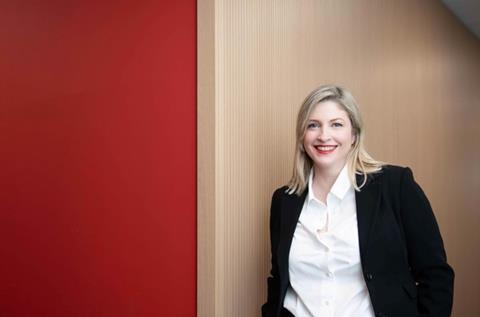Munich Re’s Christa Schwimmer says the specialty reinsurance market faces mounting pressures across marine, aviation and cyber, but stresses the importance of discipline, differentiation and long-term client partnerships.
Munich Re is navigating a specialty reinsurance market that has seen waves of new capacity enter classes from marine to cyber.

Christa Schwimmer (pictured), CEO of Munich Re Specialty Reinsurance and head of the group’s Bermuda and Lloyd’s platforms, acknowledges that competition is intensifying but sustainability remains the overriding concern.
“I see some additional competition in the marine space, especially in London, where people are pouring in more capacity. That puts pressure on pricing. Do I worry about it? Yes, because in the end we want it to be sustainable,” she said.
Schwimmer draws a sharp line between rate movements and rate adequacy, speaking with GR in Monte Carlo at RVS 2025.
“There is still adequacy in the market,” she said. “In marine, even though there is competition, pricing has not yet become inadequate. What matters is distinguishing between the development of rates and their adequacy.”
Structure or pricing
She acknowledged how primary and reinsurance cycles can diverge, citing aviation as one such example. “In aviation, you can clearly see the difference. The original market hasn’t hardened, whereas the reinsurance space, with excess of loss business, has hardened,” she said.
Recent UK High Court rulings on aviation leasing disputes are likely to accelerate settlements, she warned. “That will put pressure on the war space in addition to other recent losses. Profitability in this segment needs correction to make it sustainable, and those corrections haven’t happened yet.”
Within her own portfolio, Schwimmer has de-risked in classes where underlying conditions have weakened, such as directors’ and officers’ liability and cyber business. “Because rates were reducing, our book has reduced as well,” she explained.
By contrast, property has grown in recent years, she observed, driven by inflation and demand, with catastrophe excess-of-loss attachments recalibrating after a period of loss creep.
Schwimmer is adamant that structure, such as attachment points, matters more than price.
“I haven’t seen one serious request to move attachments downwards. We do push back, because exposures are growing. If your attachment point stays flat while insured values rise with inflation, then in return-period terms your attachment is effectively dropping,” she said.
That means even a “flat” renewal may still represent a concession, she explained.
“We always talk about risk-adjusted pricing. If exposures rise 10% and you renew flat, that is already a discount. Our price would have gone up, so ‘flat’ is actually risk-adjusted flat.”
Systemic risks and long-term partnerships
Looking ahead, Schwimmer sees demand in both cyber and natural catastrophe lines, with growth expected as risk awareness expands globally. She cautions, however, that systemic risk remains underestimated across specialty.
“People sometimes think specialty is small compared to nat cat, so there’s less volatility. But an aviation war loss can easily reach $5bn. It’s not hurricane-size, but it’s not nothing. And we haven’t yet seen a true cyber catastrophe. Once it happens, it will have a huge impact,” she said.
That uncertainty, she argues, underscores Munich Re’s value proposition. “Uncertainty is when you need someone who’s a strong partner and will be there with the capacity, the expertise and the ability to help find solutions. Continuity and reliability are what matter most.”
Schwimmer emphasised that Munich Re’s approach is tailored by line of business and client by client. “There are some clients you go through the cycle with, and others where it’s necessary to de-risk because the pricing isn’t sustainable. But for most, our relationships go back 15, 20, even 30 years. It’s about being there for the long haul,” she said.
Exceptions remain relatively rare, in terms of the reinsurer’s book. “It’s probably less than a handful in the Lloyd’s space. Generally, we go through with our clients. And of course, there are opportunistic opportunities, too.
“But our message is consistency, reliability and sustainability. That’s what people expect from us, and that’s what we deliver,” Schwimmer added.
To download the full Monte Carlo RVS 2025 annual issue of GR, click here.










No comments yet